St Pancras - Leeds - Glasgow / Edinburgh Route
Notes current to December 1967
When the decision was taken to electrify the WCML between Euston and Liverpool & Manchester, a number of parallel routes were selected to provide passengers with alternative services of a similar quality and frequency. For passengers travelling between London & Manchester the Midland route out of St Pancras was selected as an alternative.
These Midland route services were handled by a variety of express passenger locomotives - Jubilees, Black Fives, Royal Scots and Brittanias to name but a few. Once the Midland started to recieve its first allocations of main line diesels they naturally were diagrammed for some of the St Pancras - Manchester expresses.
Of the early LMR diesels, the LMS Twins had occasionally visited the route and the Fell locomotive spent much of its working life on this route. Then followed the Metro-Vick Co-Bo's and the Class 44's, the latter also working intermittently on the WCML services. But once Derby and Crewe started to deliver the uprated Peaks in the shape of the Class 45's this route saw them gradually takeover the express passenger services both from the steam locomotives and he Metro-Vicks and Class 44's.
St Pancras
Major servicing for the diesels took place at Cricklewood but to accomodate basic refuelling new facilities were constructed at Cambridge Street, adjacent to St Pancras opening on January 16th 1961. D70 was used on crew training between Cricklewood & Turvey, with crews from Sheffield & Leeds also received training on the Type 4's.
By the end of February 1961 the diesel hauled passenger workings out of St Pancras included the services to Derby, Nottingham and Leeds as well as almost total control of those to Manchester, made possible by the growing number of Peaks released from Derby & Crewe. Time keeping with the diesels was excellent including the 'up' Palatine & 'down' Robin Hood. However for the time being the existing steam timetables remained in force.
April 17th 1961 was the scheduled date for the full dieselization of the passenger services out of St Pancras. Difficulties with diesel failures and of maintaining diagrams that required use of almost every Type 4 available did not allow for quality service initially. With the 'Peaks' in charge the Royal Scots & Jubilees migrated to the semi-fasts and other lessor services, but as the diesel failures multiplied they rapidly came back to the expresses. Also in use were Britannias 70043/46. The first few days of May were not pleasant for the Peaks, on May 1st D12 expired on the 4.10pm St Pancras - Sheffield at Westhouses, replaced by Class 4 76053. The next day the southbound 'Thames-Clyde' running ahead of time with D19 failed totally at Dore & Totley, Millhouses sent out Jubilee 45623, but as in both these failures an hour was lost in each case. Several days later all services were back in the hands of the diesels, such were the vagaries of operating brand new diesels against a declining steam fleet.
As the winter months of 1961 approached the steam heating equipment on the 'Peaks' (and for that matter the majority of BR's diesels) continued to cause trouble, relegating the big Type 4's to freight duty, allowing more Jubilees & Royal Scots to find themselves in charge of Midland expresses again, mostly the Nottingham turns. More cold weather in January 1962 again crippled the steam heating systems on the diesels out of St Pancras, allowing another fling by steam on the expresses. Some of the displaced Peaks ended up covering for the suburban DMU sets, providing the local commuters with some exhilarating sprints out to Bedford, two of the star performers being D47 & D49.
The winter timetable starting September 10th 1962 brought substantial accelerations for the services out of St Pancras, particularly on the Manchester services worked by the Peaks. The first couple of weeks found the new timetable working well, the twelve coach trains not proving much of a challenge for the big Type 4’s. On the Up ‘Nottingham Pullman’ the press entourage were treated to a run of 114 minutes behind an un-identified Peak.
Several Peaks were named at locations covered by these workings, D52 'The Lancashire Fusilier' at Manchester Piccadilly on October 31st 1963 and D54 'The Royal Pioneer Corps' at St Pancras on November 14th 1963.
Early January 1966 saw a shortage of Peaks on the Midland Lines, a number of Type 2’s filled in on services between Derby & Manchester. Brush Type 4’s were becoming more frequent on a variety of workings at the southern end of the Midland mainline with examples from Toton & Tinsley predominating.
From the new timetable commencing April 18th 1966 a number of Manchester - St Pancras expresses, including the ‘Midland Pullmans’ were discontinued as were some Leeds services. (These Blue Pullmans migrated to the WR for use on a new Paddington - Oxford service and supporting the Bristol and Cardiff sets). Balancing these losses were improved semi fasts to Derby, Nottingham & Leicester behind Peak’s hauling six/seven coaches.
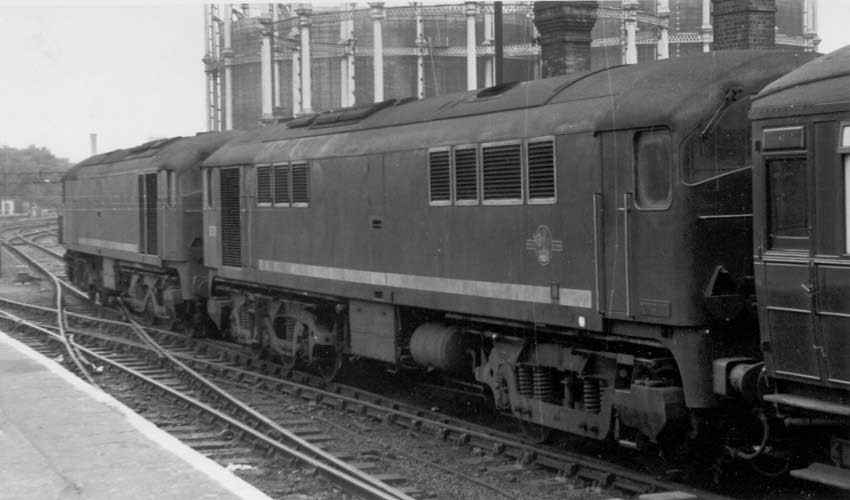
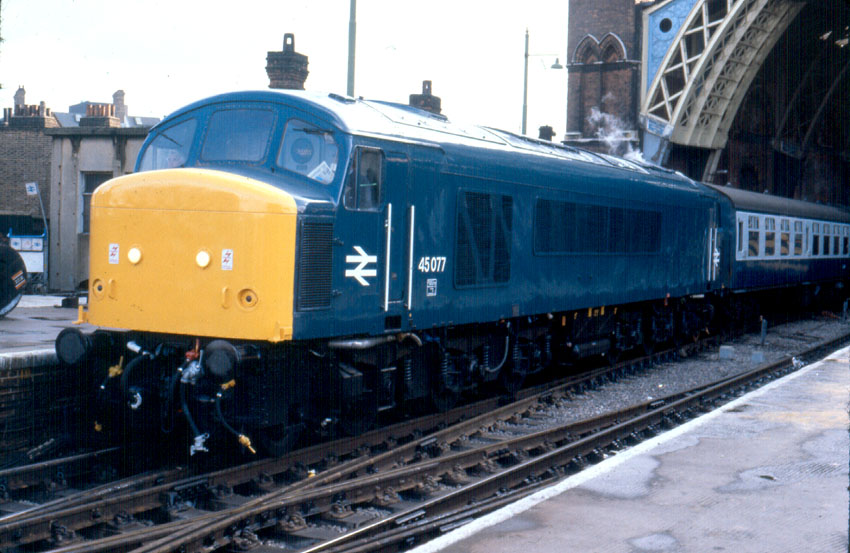
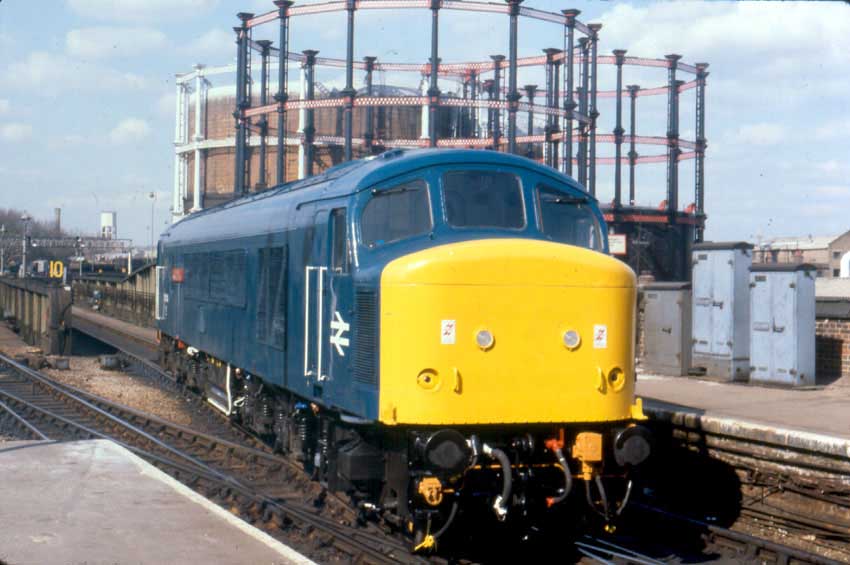
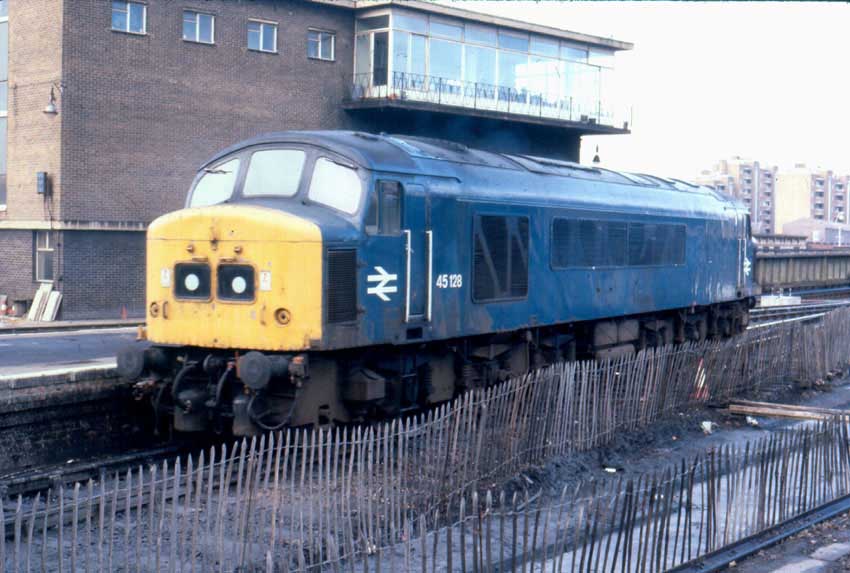
45128 started out as D113, delivered in September 1961 to Derby (17A). In its final days it worked a Bedford - Kettering shuttle on May 20th 1988 in support of visitors tothe Bedford Open Day. On July 19th & 20th it was working between Manchester Victoria & Blackpool, failing there on the 20th. Its service life ended on August 1st 1988, stopped with brake faults, repairs not being approved.
It received a very temporary reprieve on February 20th 1989 when it was reinstated to replace fire damaged celebrity 45106. It was moved to Doncaster depot in March 1989 for wheel turning, it came back to Tinsley for load testing which proved unsuccesful at which point it was returned to withdrawn status on April 22nd 1989, the last Peak to remain in service. After two years in storage it moved with 45141 towards Glasgow, however during the journey on Friday 13th March 1992 a roof panel fouled the overhead line equipment near Warrington causing considerable disruption. It was quickly broken up by MC Metals, Glasgow during July 1992.
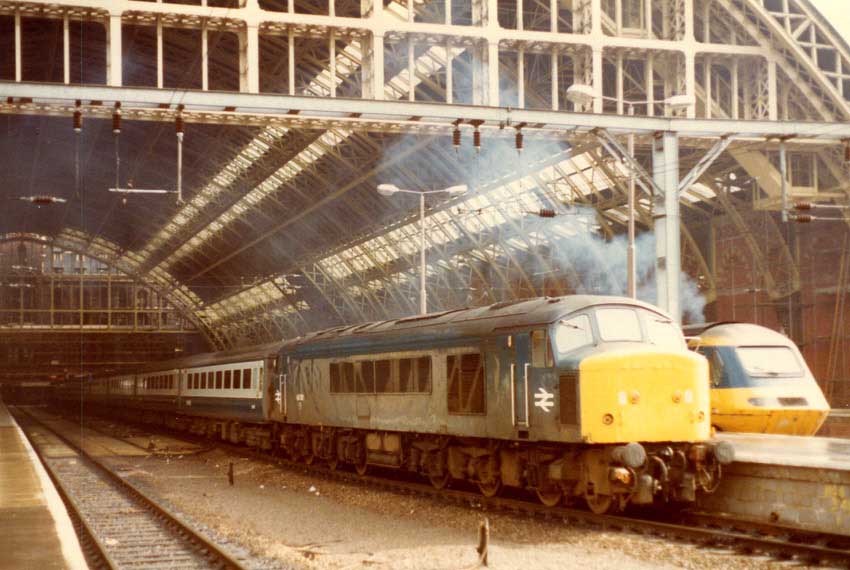
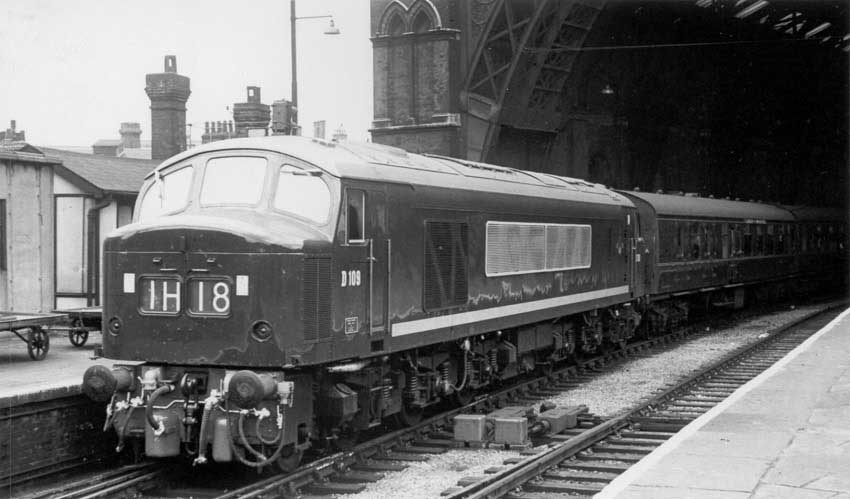
A bright future lies ahead for D109 (later 45139) with a career of almost twenty six years in revenue earning service which would take it to locations many miles from St Pancras and across all regions of British Railways. D109 would eventually be equipped with electric train heating equipment during the early 1970's, allowing it's use on further passenger work when steam heating was phased out. Withdrawal came in April 1987 though it would linger in storage until finally dispatched to MC Metals, Glasgow for scrapping, the end coming in March 1994.
Cambridge Road
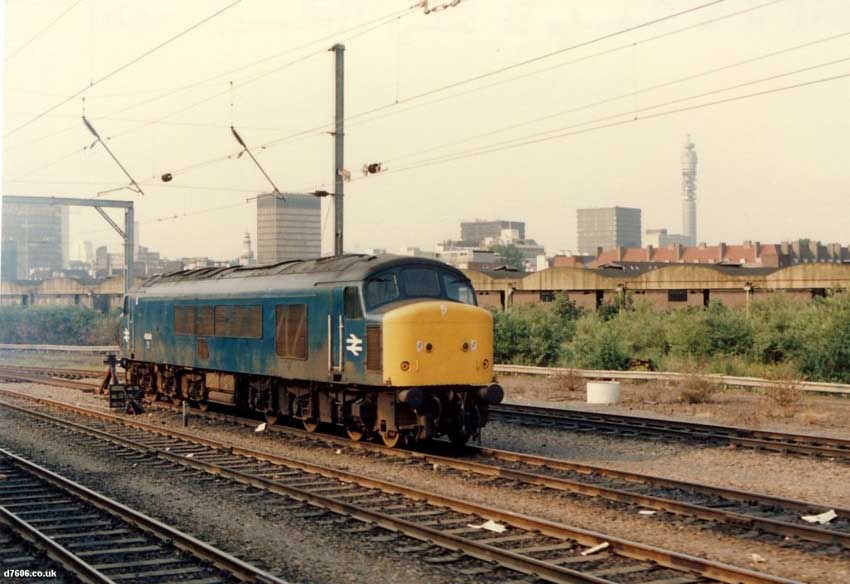
Cricklewood
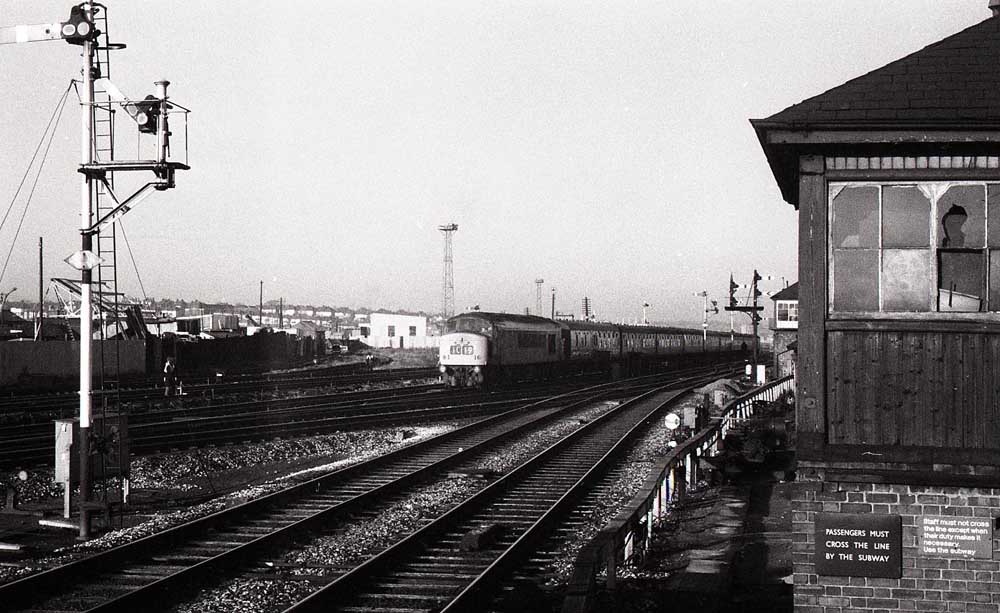
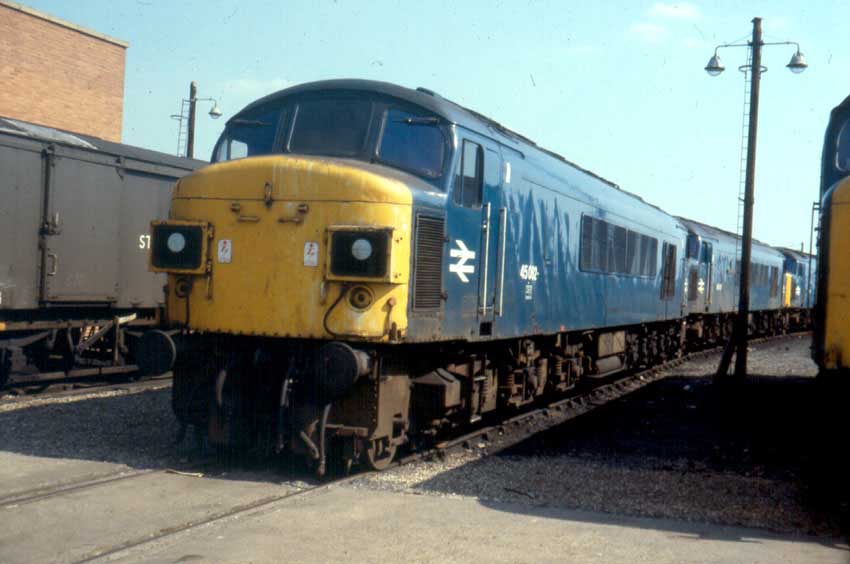
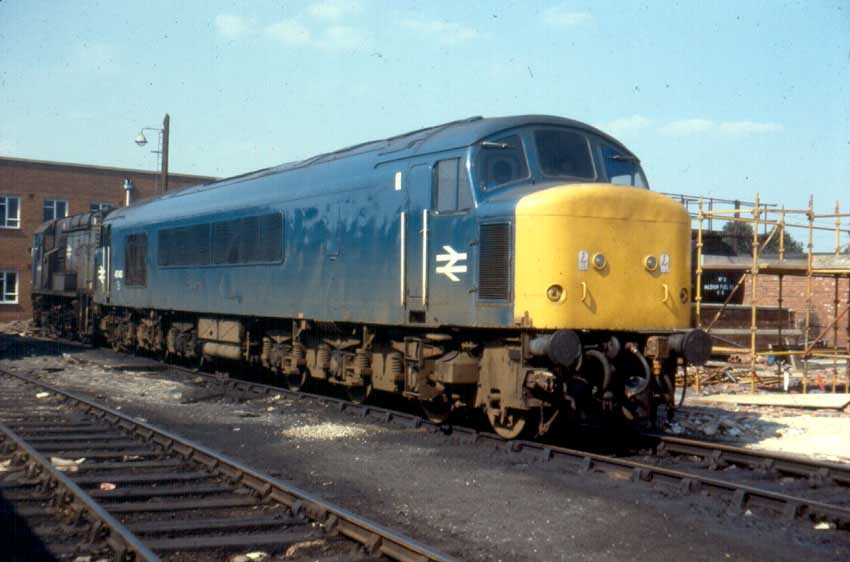
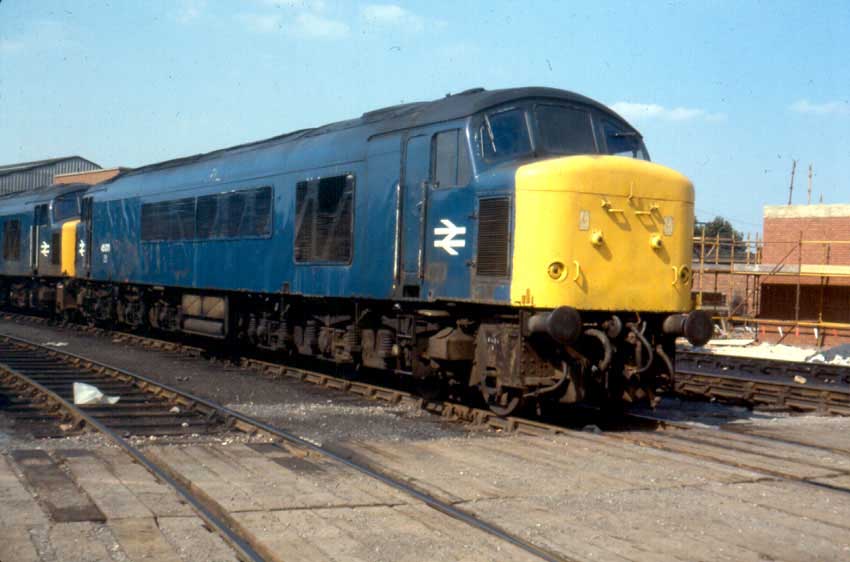
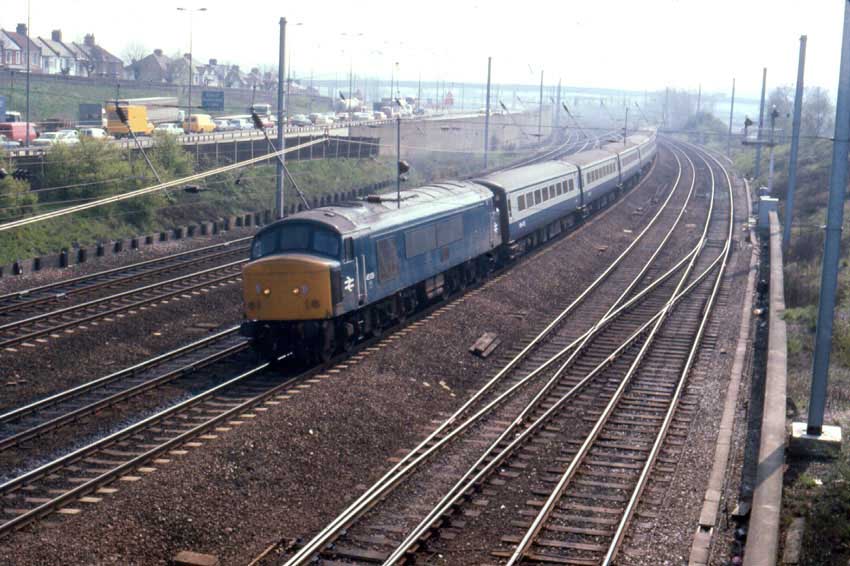
Bedford
During February 1961 Bedford acquired D85 for crew training, frequently covering the 8.21am passenger to Wellingborough. The Peaks were also used on the freights, including the longer distance jobs. On February 25th D19 was noted at Carlisle in charge of the Harpenden - Bonnybridge car train.
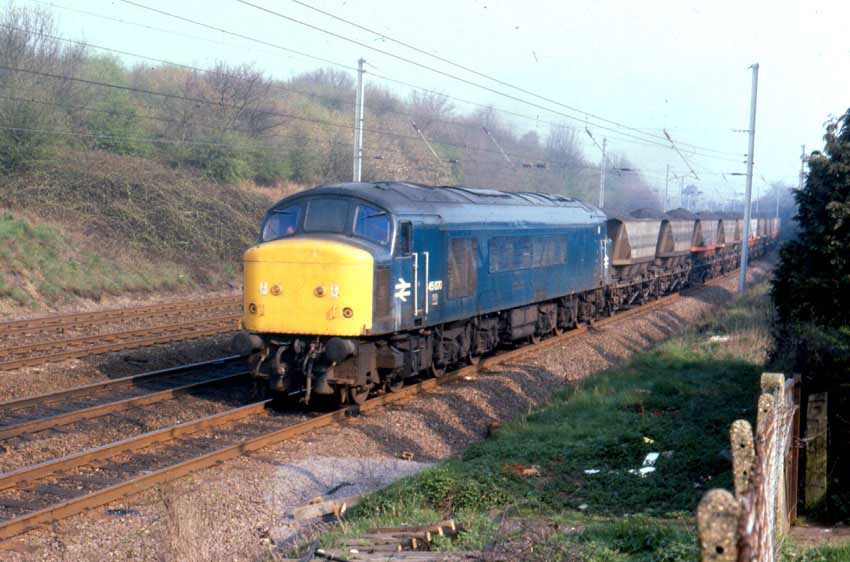
Leicester
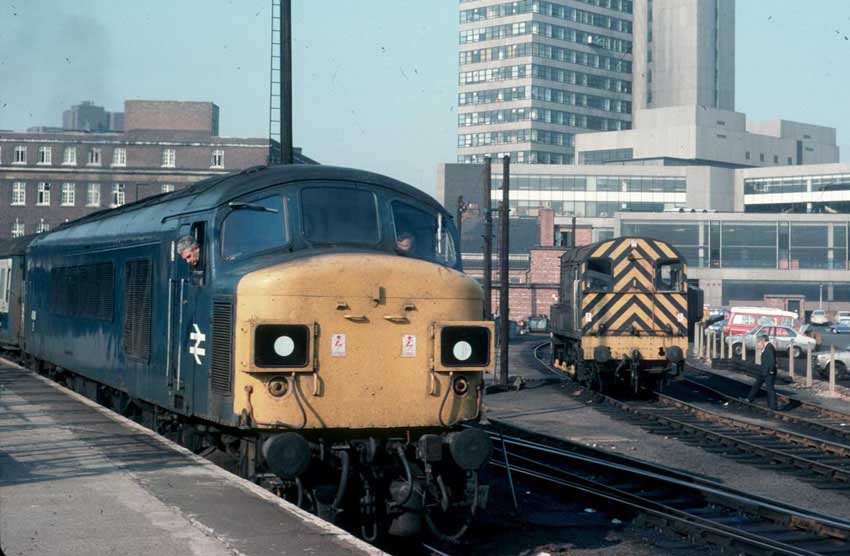
Derby
It was during September 1960 that the first of the uprated Peak’s entered service, D11 was allocated to Derby (17A) from Derby Works and D68 to Crewe (5A) from Crewe Works, though once the Crewe built machines were soon transferred to towards Derby after their shakedown trials were complete. By the delivery of D78 they were being allocated directly to Derby (17A). There primary use was on the St Pancras - Manchester expresses but by December before D14 was loaned to Leeds Holbeck (55A) for crew training. During November D11 was noted on nocturnal test train workings south from Derby.
Because the line from Derby to Leeds was shared by the St Pancras services and the growing diesel powered NE/SW services it was inevitable that Peaks would be swapped between these services when failures and diversions occurred. These 'unusual' workings are well reported in the period railway press.
Observations at Derby on July 3rd 1965 during daylight hours revealed only two steam passenger workings, the 13.40 to Llandudno with 45350 and the 17.26 from Sheffield behind 45211, the Peaks and Brush Type 4’s were dominating on the long distance services., though the 10.28 Newcastle - Bristol was noted an hour late behind D5258.
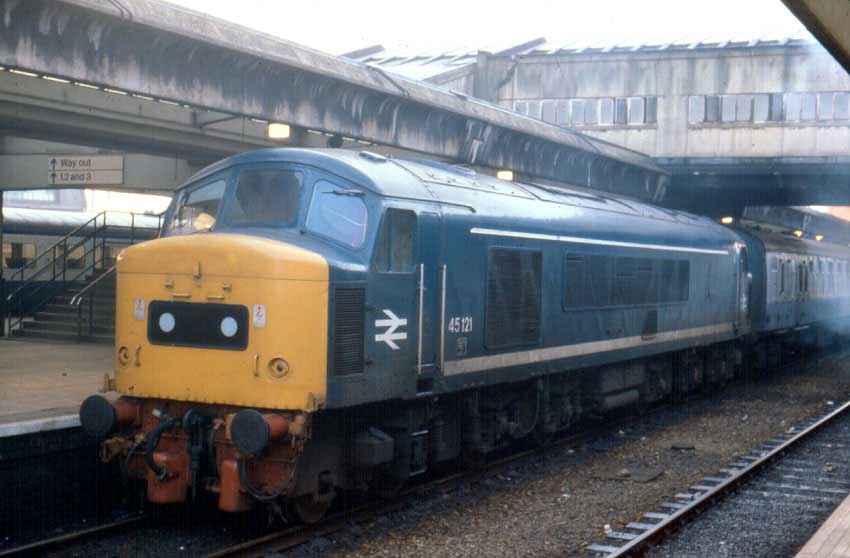
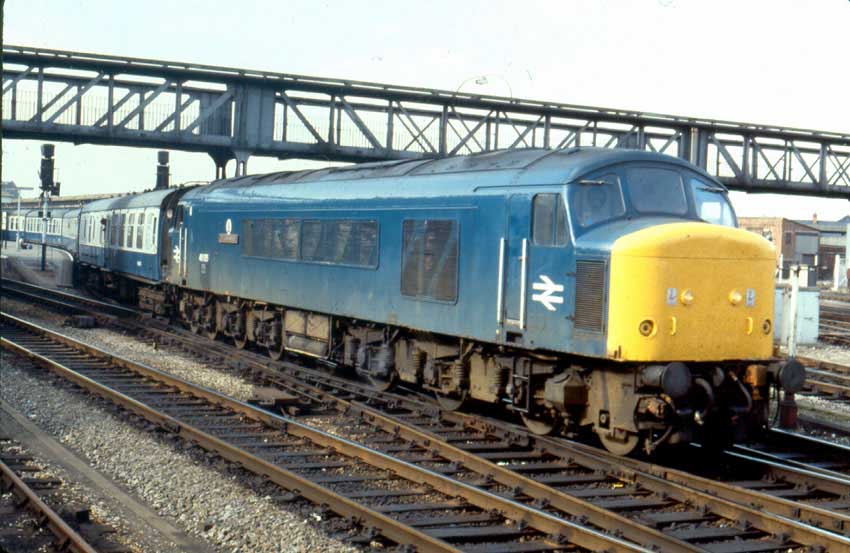
Bennerley (Ilkeston)
On the late afternoon of July 8th 1977 the 11.50 Glasgow - Nottingham only had a short distance to run to complete its journey when the train ran into some derailed coal hoppers near Ilkeston. The locomotive, 45067 bore the brunt of the collision, leaving the entire train derailed. Fortunately there were no serious injuries sustained although the driver was noted exiting the rear cab of the Peak, complete with a bag of shopping. Considering the actual point of impact on the locomotive it is very fortunate that the driver sustained nothing more than being a little shookup.
The locomotive was less fortunate, although the damage was not considerable it was enough to warrant withdrawal. This would be the first Class 45 retired, it would linger at Derby Works until broken up during June 1980.
Photographs from the collection of Rob Drake.
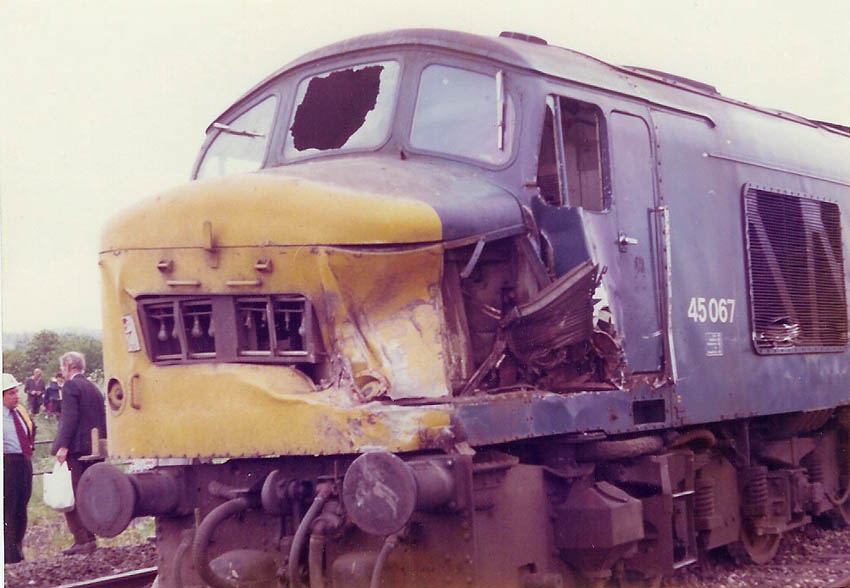
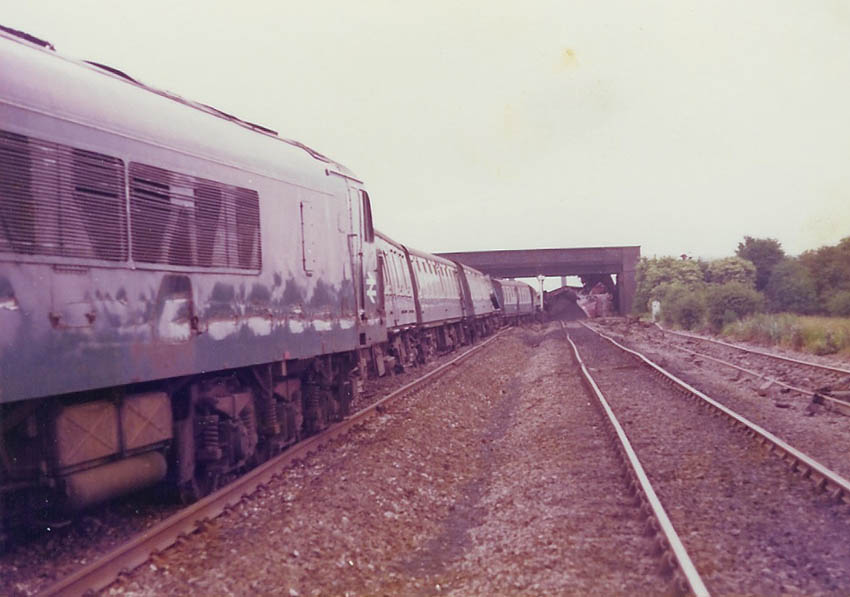
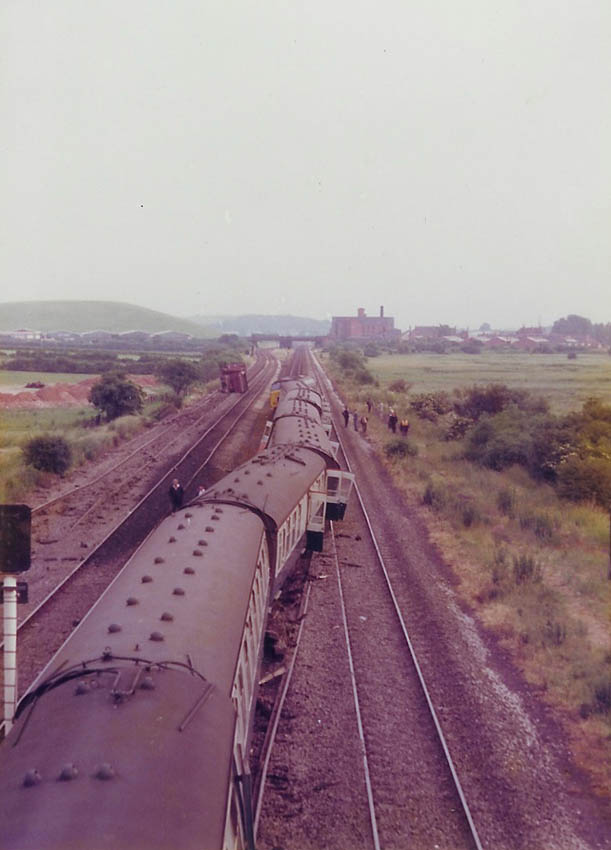
Clay Cross
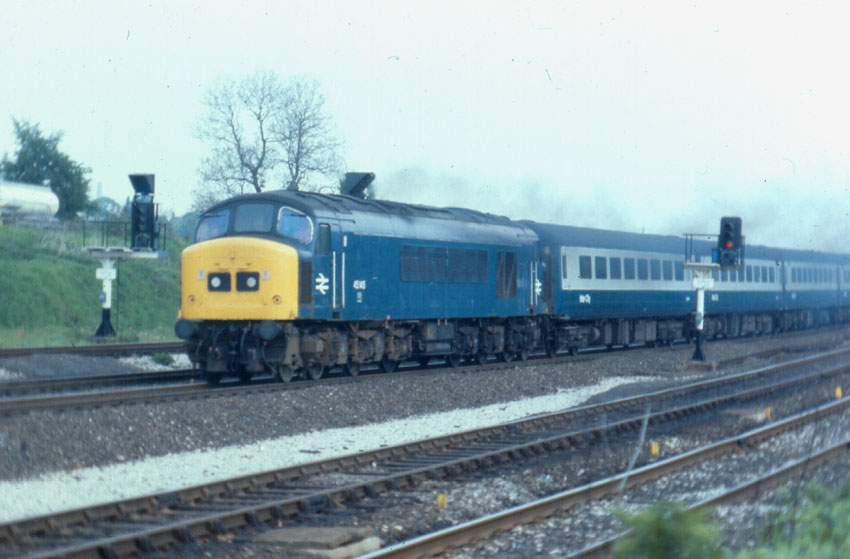
Chesterfield
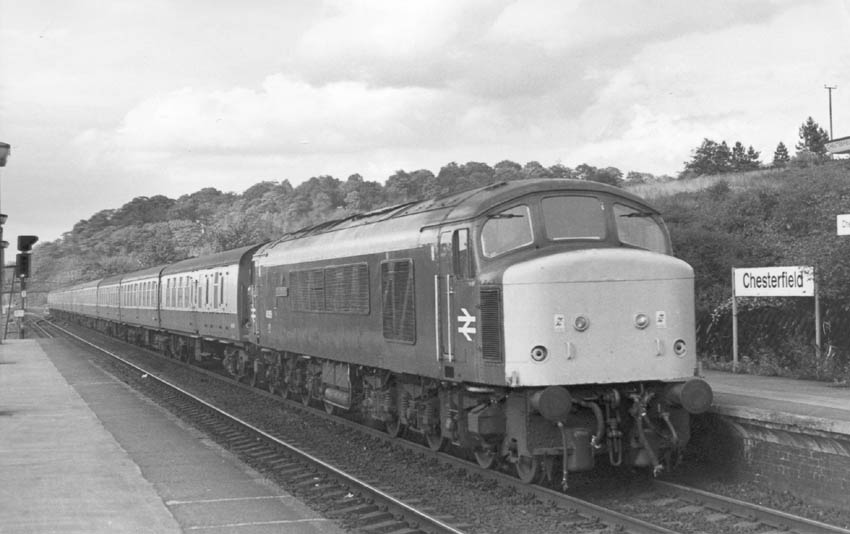
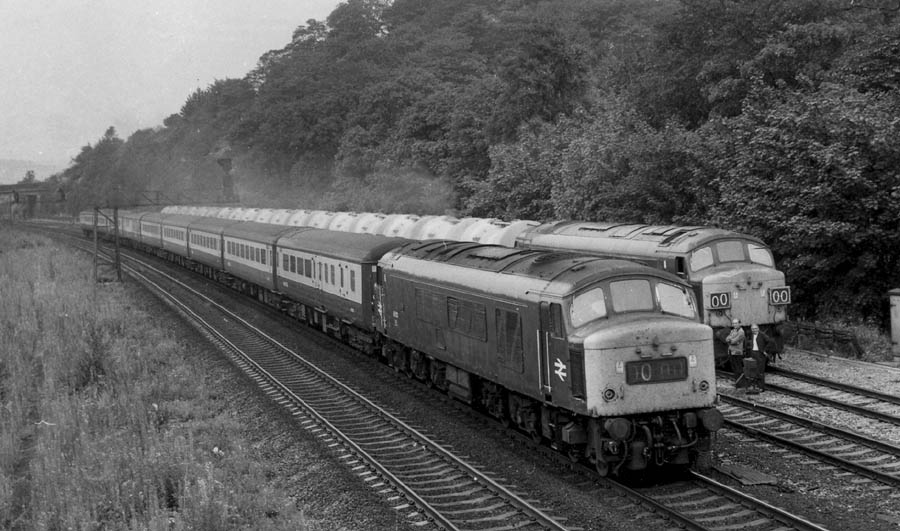
It survived in service until October 28th 1987 when it suffered derailment damage at Healey Mills. It was withdrawn on November 6th and was eventually transferred to Derby Carriage & Wagon Works to be used as an ETH supply for testing coaches. During April 1993 it was used for crash testing with Class 158 units, and finally broken up by Thomas Hill in September 1993. But for now, in this fine view by J Davenport 45121 has another decade of service ahead.
Sheffield
Observations at Sheffield Midland during April 1962 revealed that just under half of the express passenger turns were still being handled by steam.
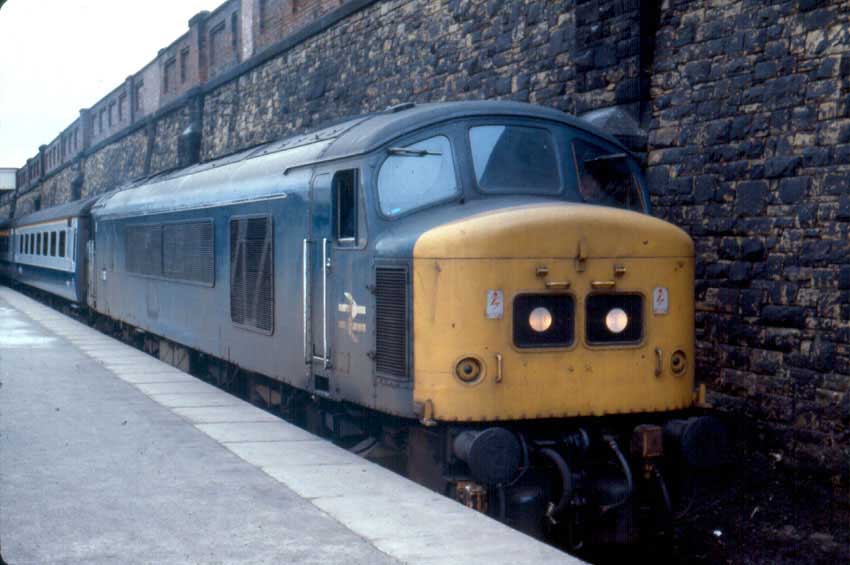
Rotherham
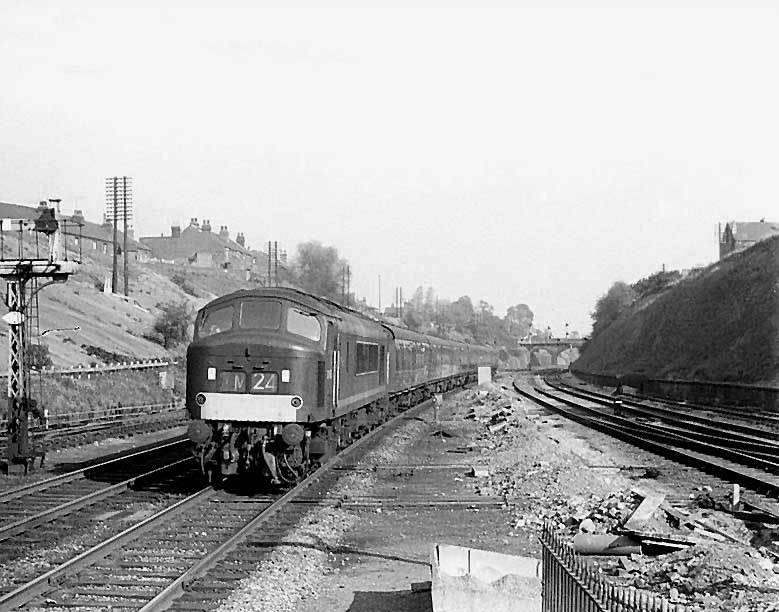
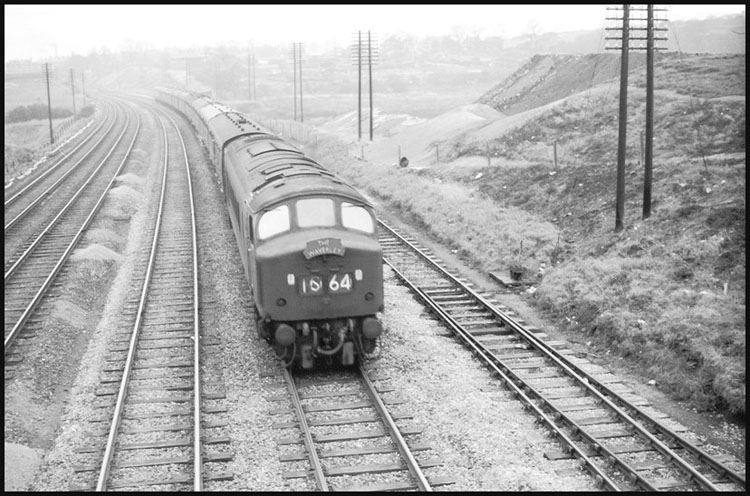
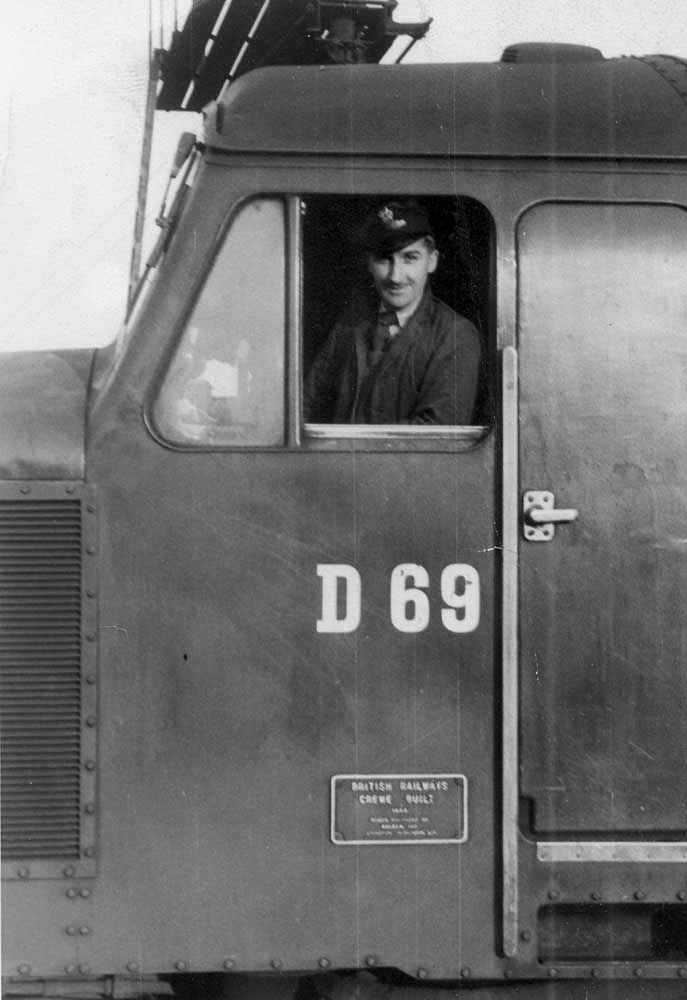
Leeds
By the end of 1960 D11 was loaned to Leeds Holbeck (55A) but used by Neville Hill for crew training. Along with D14 & D302 it worked a turn to Appleby West - reporting number N580, leaving Neville Hill at 9.31am, arriving Appleby West at 11.43am, departing there at 12.55pm. They were also used regularly on a short Stourton - Lancaster van train, leaving Stourton at 9.30am, returning from Lancaster at 2.15pm. Future plans were for the big Type 4’s to take over the ‘Thames-Clyde’ north of Leeds, currently in the hands of Britannias, Royal Scots & A3’s. However for the most part in these early days the Peaks would generally be found working south of Leeds.
Commencing the week of June 12th 1961 the Up Thames-Clyde was diesel hauled as much as possible, the first week saw D20 & D26 (twice) in use alongside Royal Scots & Britannias whilst the sleeper services also had Peaks diagrammed, D12 on 16th. From July 3rd Peaks also took over some of the un-named, secondary passenger turns over the Settle & Carlisle route.
March 1965 arrived with blizzards causing considerable grief throughout the regions during the first week. D174 worked an early morning relief on March 4th, the 02.23 Leeds - St Pancras, filling in for the main train after it had tangled with snowdrifts at Thornhill, whilst the up Condor, behind D81 was twelve hours late at Hendon.
The closure of Leeds Central at the beginning of May 1967 and the diversion of traffic into Leeds City was accomplished relatively smoothly, though much rearranging of traffic had occurred during the run up to the closure. For a while many of the expresses from St Pancras avoided Leeds and terminated at Bradford Forster Square. On the final evening the only Sulzer taking part in the proceedings was D23 on an engineering train at Holbeck High Level used for completing new connections.
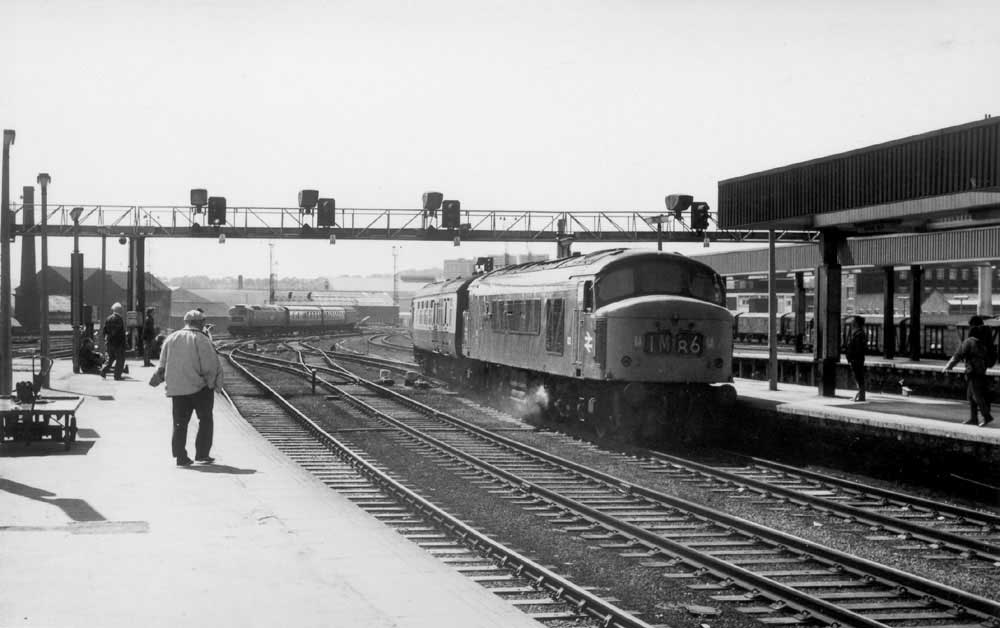
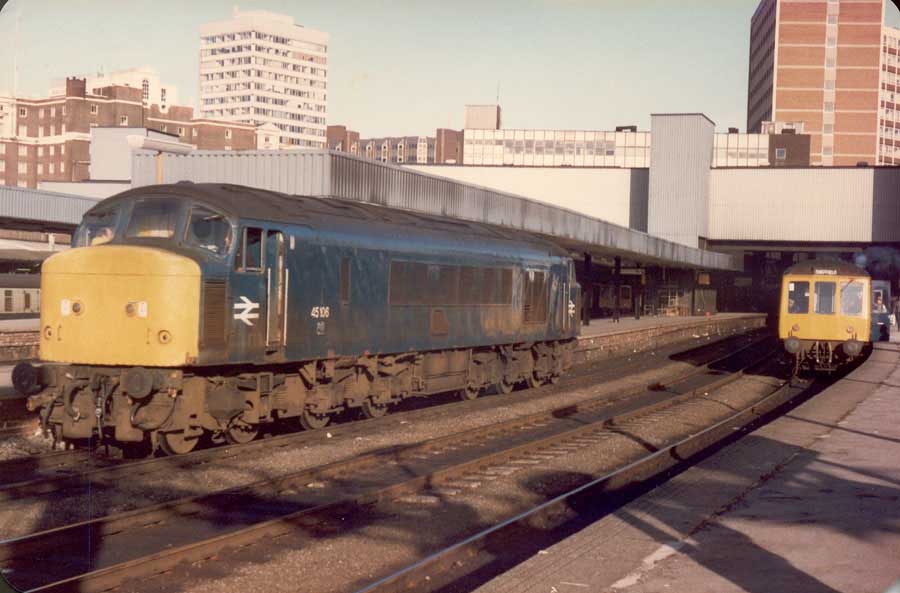
Saltaire
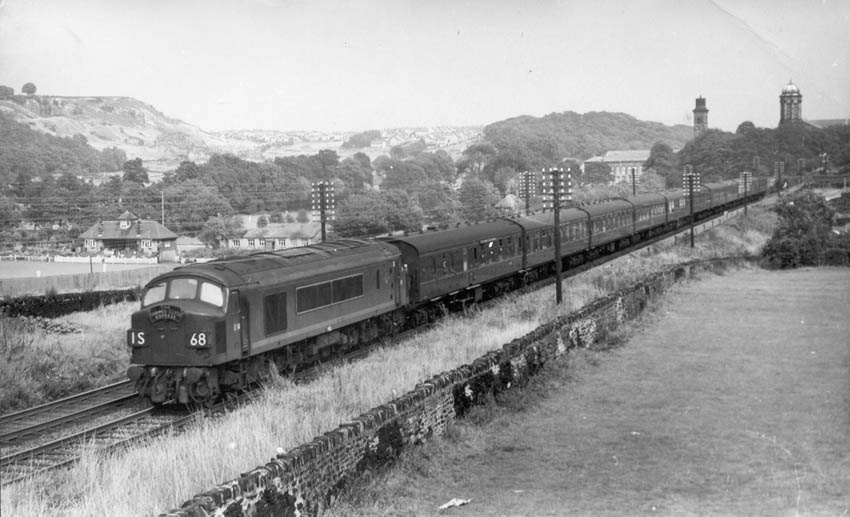
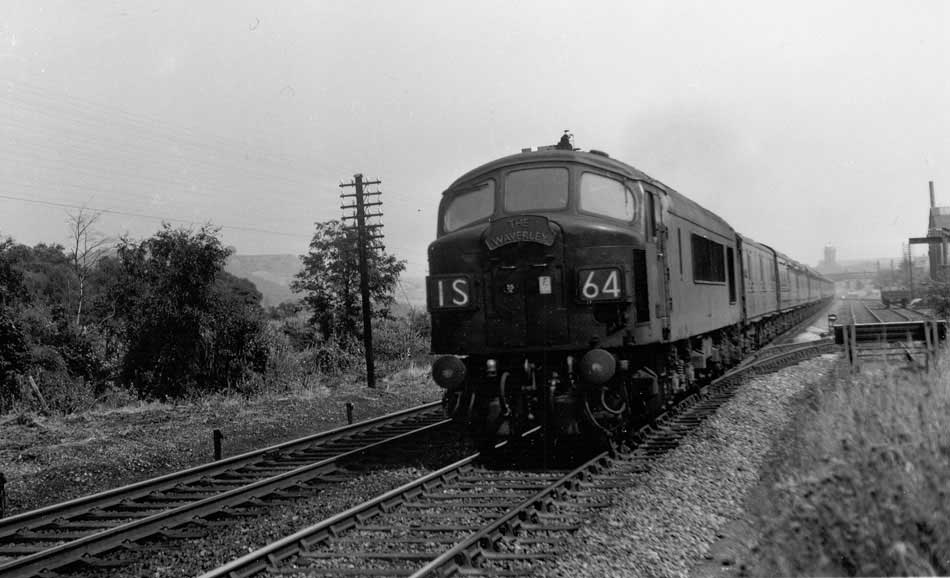
Skipton
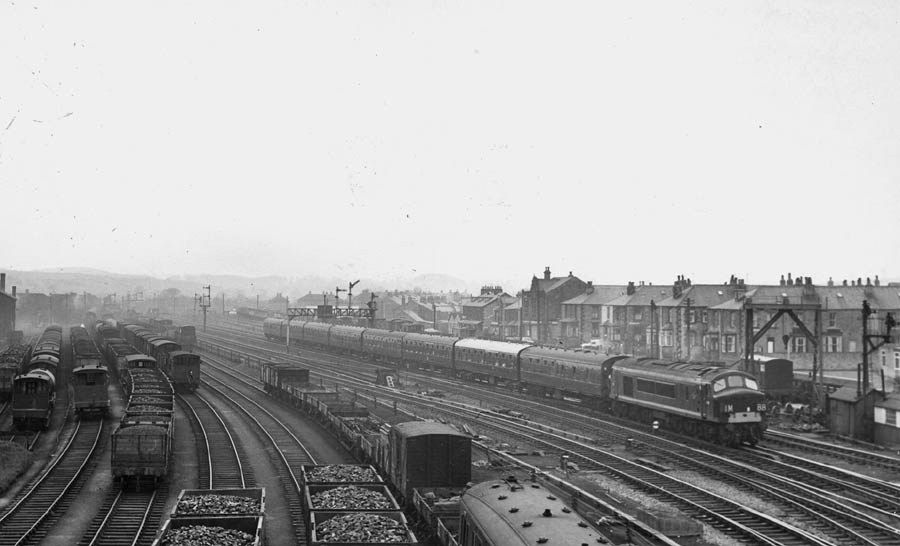
Hellifield
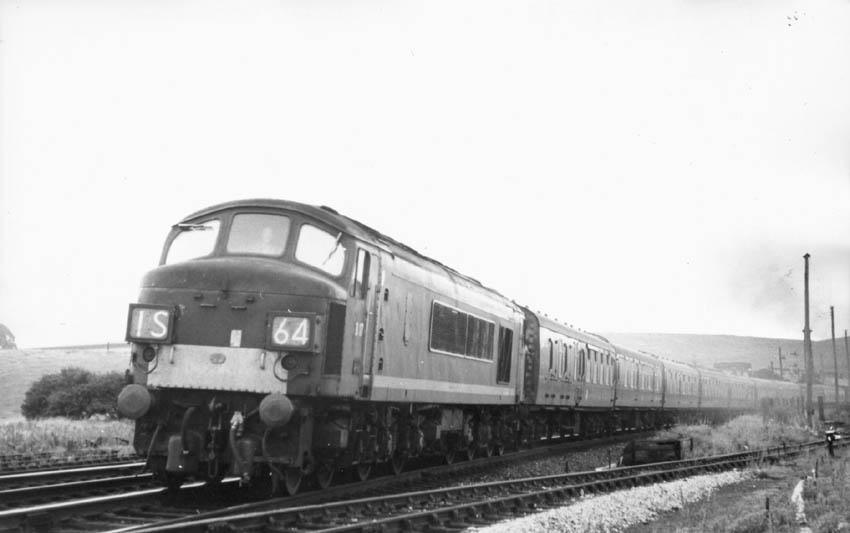
Blea Moor
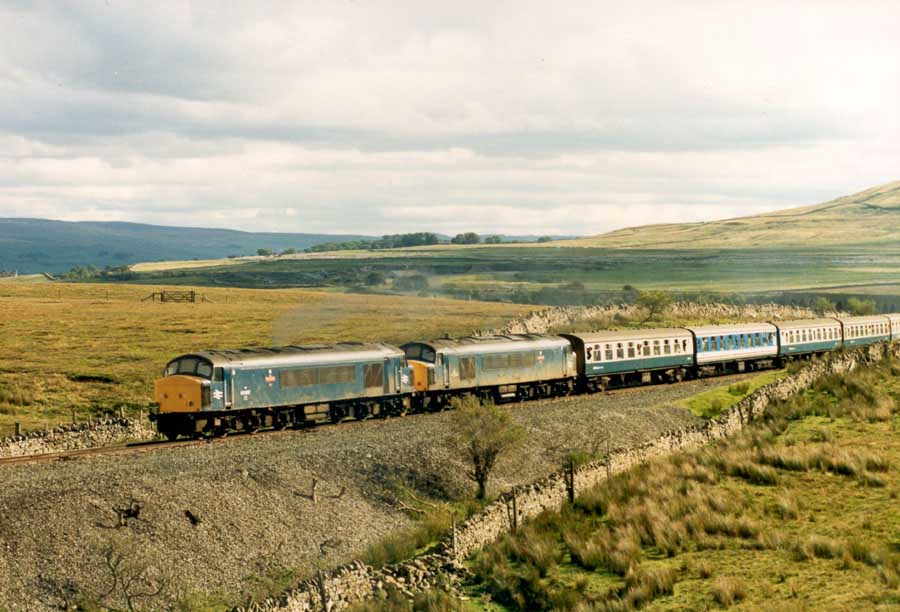
Appleby
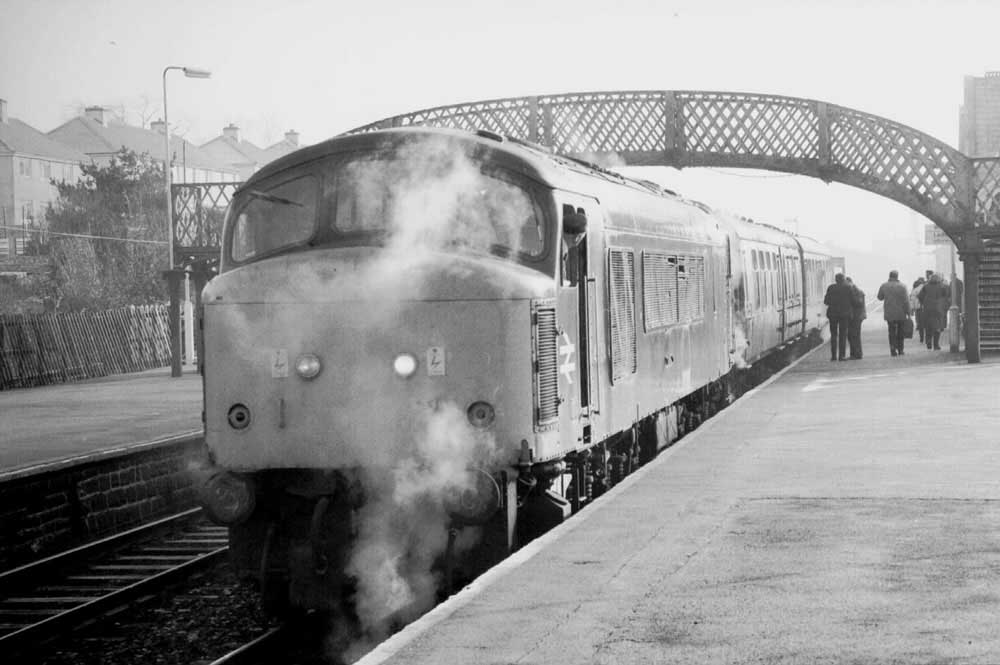
Carlisle
Although Carlisle had been host to the Class 44's working over the WCML the first Class 45's into the area would arrive via the S&C working passenger and freight turns. On February 25th 1961 D19 was noted at Carlisle in charge of the Harpenden - Bonnybridge car train.
The 1961 summer timetable saw a number of Peaks transferred including two - D91 & D101 sent to Carlisle (12B). This allowed them to make intermittent workings on the Leeds - Glasgow St Enoch services whilst on June 14th D91 was noted working two round trips of empty vans over the Waverley route - between Carlisle & Hawick, seen as a precursor to the use of the Peaks on the Edinburgh - Leeds workings. When D5079 was re-allocated back to Willesden from Carlisle in June after its long stint on the Hellifield passenger turn it was left for the Peaks to fill in for a short while.
By June 28th 1961 more Peaks were diagrammed over the Waverley route, D101 worked the down Waverley from Carlisle, returning with the 10.50pm sleeper, D29 working these on July 4th. On July 3rd D25 started to work the down sleeper from Leeds returning with the up Waverley.
Another lightweight local passenger turn, the 8.5am Carlisle - Hellifield and 11.58am return was being handled by Carlisle’s D138 on Saturdays only during March 1962.
On January 22nd 1963 the 10:05pm Edinburgh Waverley - St Pancras became stuck in heavy drifts near Dent, the rear coaches were able to return to Carlisle reaching London via Newcastle. The line through Dent would not re-open until January 24th. More heavy snow fell on February 5th & 6th, the Settle & Carlisle line became blocked between Mallerstang & Dent, not being re-opened until February 23rd. Such were the problems from the severe winter that it was not until March 23rd when the Midland night sleepers were rerouted back over the Settle & Carlisle line, though certain long distance services continued to run via Ingleton and the Waverley was not running between Leeds & Carlisle.
D58 was required at Carlisle on May 1st 1963 for its naming ceremony, becoming 'The King's Own Royal Border Regiment'.
On the Settle & Carlisle route a review of trains at Hellifield during February 1966 (mostly) daylight hours found forty eight trains passing through, almost equally split between passenger and freight. Thirty five were hauled by steam, three Peaks handled only passenger workings and four Type 2’s only freight.
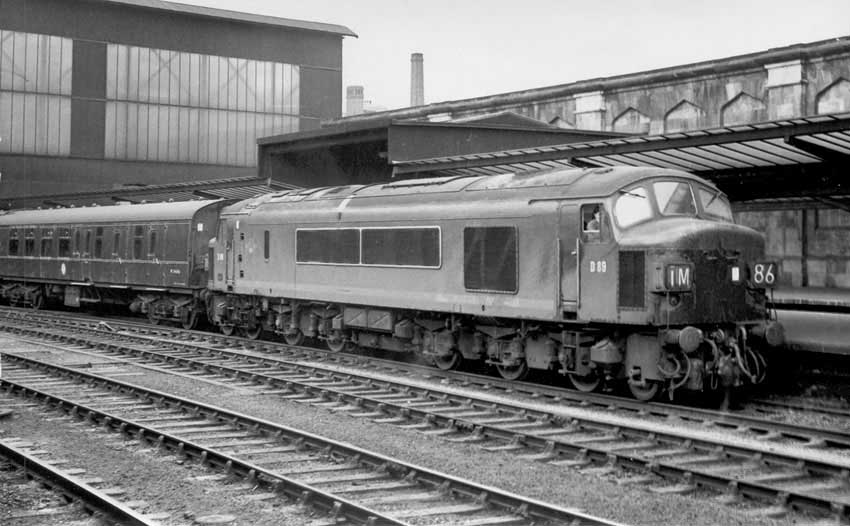
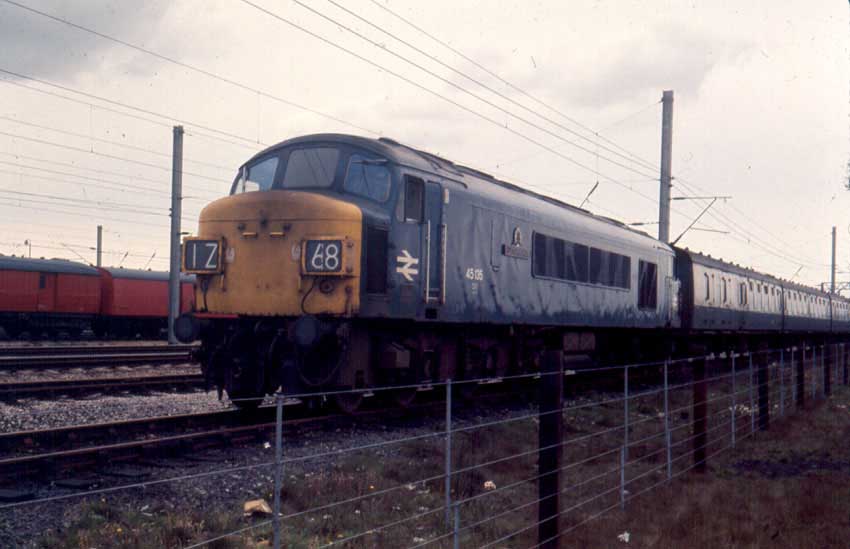
Dumfries
North of Carlisle the Peaks were most familiar with the former Glasgow & South Western route to Glasgow.
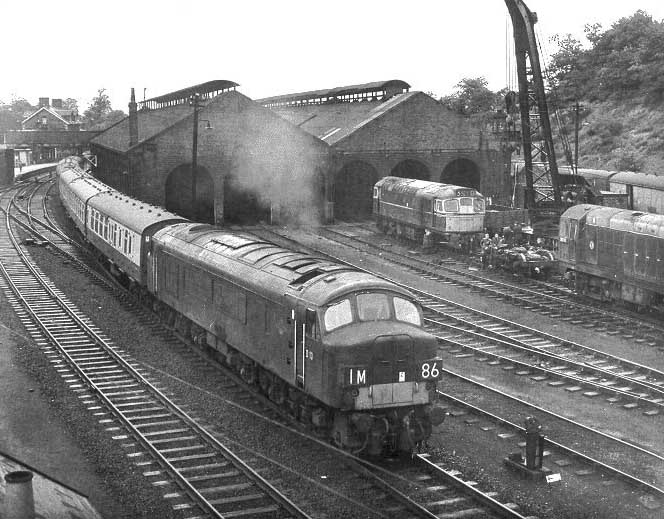
Glasgow
The first Peak loaned to a Scottish shed was D24 to Corkerhill (67A) during late April 1961. It had been noted on the 5.03pm St Enoch - Kilmarnock, returning with a freight to Elderslie, by the end of May it was a frequent visitor on the St Enoch - Ayr services, though its intended primary purpose was for handling the Anglo-Scottish expresses.
During July 1961 a couple of arriving services at St Enoch had steam/diesel combinations, the 13th's 9.25 ex St Pancras had D11 & 46109 and the 10.27am ex Leeds had D18 & 70044. On Saturdays D24 was a regular on the 7.50am St Enoch - Ayr, usually returning on a relief or parcels service, during August it would be returned to the LMR. Other Peaks had worked in on the Saturday's only 11.53 St Enoch - Ayr, D26 & D28 in late June, presumably a fill-in turn before heading south with an overnighter.
Another fill-in turn created late in 1961 for the long distance Type 4's involved the 7.50pm arrival at St Enoch (ex-Leeds) which was then diagrammed to work the 10.25pm Glasgow - Carlisle returning with the 9.35pm ex-Euston prior to taking out the 9.20am St Enoch - Leeds.
Early in January 1962 new Class 46's were loaned to a variety of sheds, including D138 to Carlisle (12B) & D147 to Corkerhill (67A) for crew training. The latter was frequently used on an afternoon freight to Troon, returning with a workers train from Barassie to St Enoch. Later it would work an early morning St Enoch - Ayr parcels, then running light to Largs to work the 7.35am back to St Enoch.
During March 1961 Peaks used on the morning freight to Ayr included D97 (24th), D127 (28th) & D49 (31st).
Corkerhill’s D147 seemed to have no fixed duties at the beginning of May 1962, being used on many of the local turns. The ‘Condor’ working was now frequently worked by Peaks rather than Type 2’s, May 23rd’s up working had 25 platefits hauled by D85.
A rather unusual working was that of D15 in charge of the 6.15pm Edinburgh Waverley - Glasgow Queen St passenger on August 6th 1963, presumably borrowed off an inbound Waverley route working.
The ‘Thames-Clyde’ found itself a new home, at the start of the 1964 winter timetable the service being diverted from St Enoch to Glasgow Central, the last down working of the train arrived behind D21 and the last outbound working to St Pancras, the 21.25 up sleeper departed behind D22.
The end of 1964 saw the loss of the local passenger from Glasgow Central via Lockerbie to Carlisle, although steam worked until the end, one service - the 12.25 Glasgow - Lockerbie was diagrammed for an LMR Peak! Another frequent Peak working at Glasgow Queen Street, normally from Gateshead, was the ‘North Briton’, which was known for its fast working with only eight coaches to Edinburgh.
During 1965 the Peaks laying over in the Glasgow area continued to be used on fill in turns, D59 being noted on December 29th with the 11.30 Wemyss Bay - Glasgow. They could also be found on other internal Scottish workings, particularly on the Glasgow - Dundee route, being diagrammed for the 7.15 to Dundee and 12.00 noon return.
Peaks continued to work out of Glasgow Buchanan Street, the 12.00 Dundee - Glasgow, 18.00 return and the 16.25 to Inverness (to Perth) were favourites during 1966 with D89 noted on Feb 5th & 9th on the former two and D46 on the latter on 26th & D49 on March 5th.
During October 1969 a maintenance strike affected much of the system, particularly with the double headed Class 50's on the WCML. Unrelated perhaps was the use of Bristol based 150 on a midmorning Sheffield - Glasgow Central, the Peak working throughout.
Edinburgh and the Waverley Route
As part of the driver training over the Waverley route June 14th 1961 found D91 working two round trips of empty vans between Carlisle & Hawick, as a precursor to the use of the Peaks on the Edinburgh - Leeds workings.
The last day of August 1961 found D21 failed at Tynehead in charge of the Up sleeper, the 10.05 Waverley - St Pancras, V2 60937 dragged the train to Hawick where B1 61184 took over to Carlisle. D29 spent four days (December 7th - 10th 1961) dumped at Hawick after failing on the 10.5pm Edinburgh - St Pancras (Up Waverley), its working being taken up by lowly 80113!
The Waverley Route saw a major shift of power from steam to diesel from May 7th 1962 with Haymarket Type 2's taking over the stopping services. Some heavy trains were noted in this period, on May 18th D153 still on allocation to St Margarets handled fifteen coaches. Peak availability on the ‘Waverley’ had improved considerably, only two failures being recorded during the month, on the 14th & 28th. About a dozen freights were also diagrammed for diesels, these moves created a reduction in the steam fleet at Carlisle Canal shed.
On Boxing Day 1962 the ‘Great Freeze’ set in, with heavy snow accumulations beginning, upto 18 inches falling in the south, this day found Gateshead based D178 on crew training at Hawick.
From September 7th 1964 the ‘Waverley’, the through Edinburgh - St Pancras daytime service was discontinued. It would now only operate as a portion of the ‘Thames-Clyde’ service on slightly different timings, worked by a Holbeck Peak and four coaches, the Peak filling in as it laid over between its nocturnal Edinburgh - Leeds sleeper workings. The former path of the ‘Waverley’ was now partially filled by a DMU between Edinburgh & Hawick. All was not bad news however for this route, late in 1964 a new freight service was added, a thrice weekly Kings Norton - Bathgate & return car carrier, diagrammed for Peaks, but occasionally worked by Saltley Type 2's. This train often carried as many as one hundred cars with a journey time of twelve hours.
For the period of the 1965 summer timetable (June 14th - October 2nd) the ‘Waverley’ was restored to service in its original timetable paths - 10.15 ex Edinburgh & 9.15 ex St Pancras, diagrammed again for Peak haulage. The Kings Norton - Bathgate car trains were also frequently Peak hauled at this time over the Waverley route, up & down workings would often swap locomotives at Carlisle, with Peaks from almost every depot working these trains.
Failures on the Waverley route continued to be well reported. On February 4th 1967 D35 couldn't make it out of Kingmoor to cover the 16.47 to Edinburgh. Brittania 70047 deputised and successfully completed a round trip, coming back on the 21.56 to St Pancras as far as Carlisle. Three days later D15 working the 21.15 St Pancras - Edinburgh expired at Hawick, the pilot D8615 assisted into Edinburgh. By the afternoon of the 8th D15 had been revived to work the 14.55 to Carlisle and 19.44 return, but this caused it to miss it's use on the 21.56 to St Pancras.
December 30th 1968 found the down Thames-Clyde late at Carlisle, its connection to Edinburgh (15.58 Carlisle - Edinburgh) was in the hands of D89 running about half an hour late.
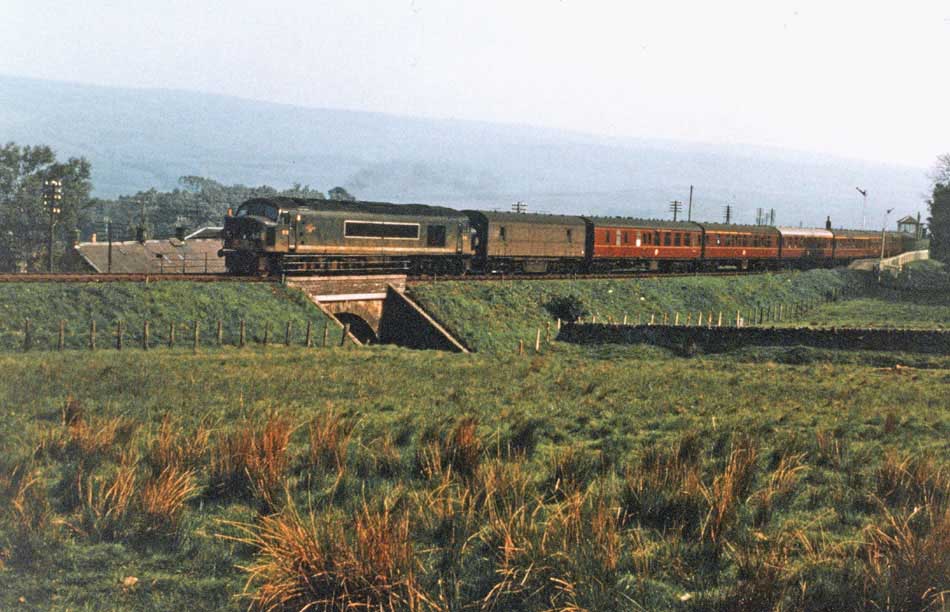
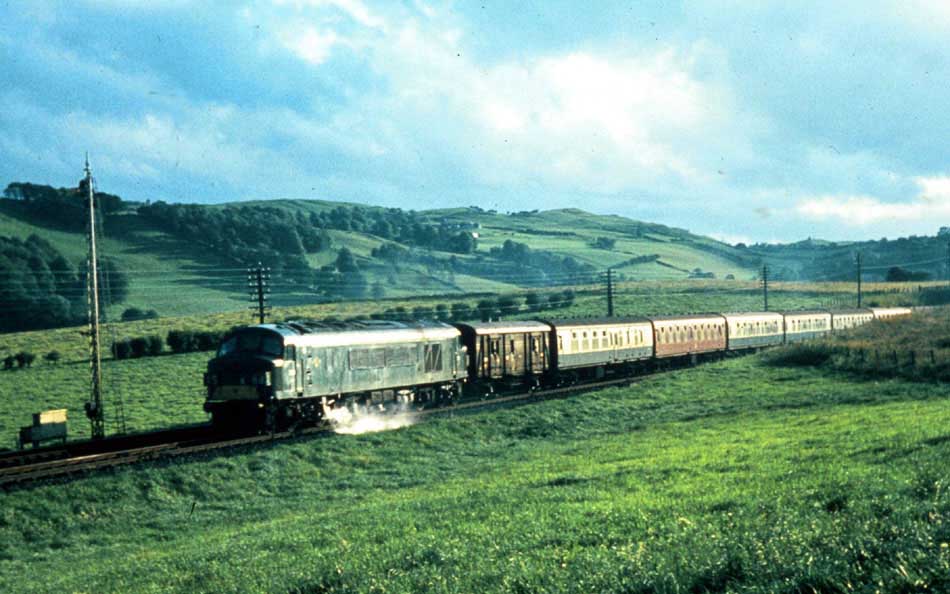
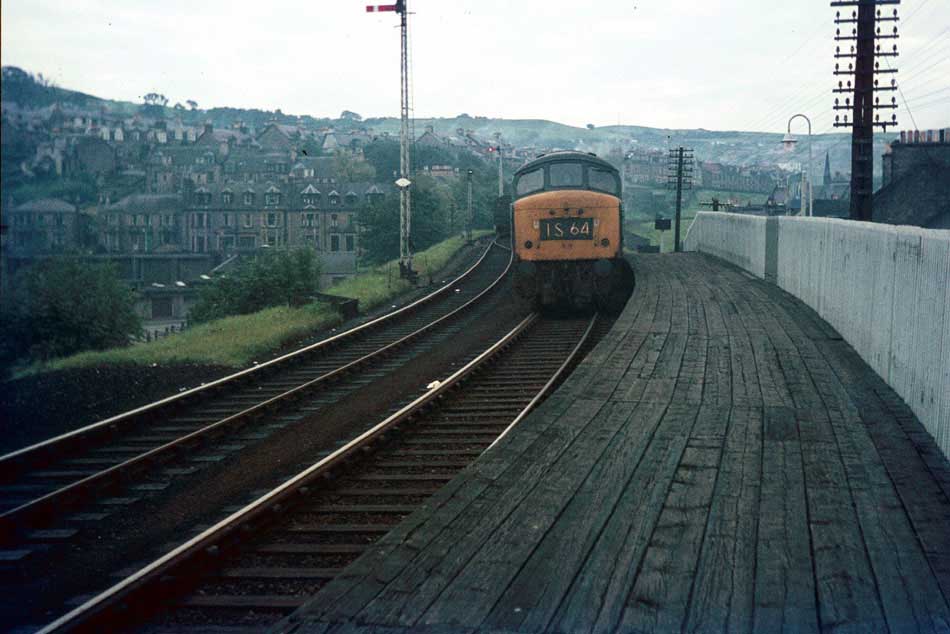
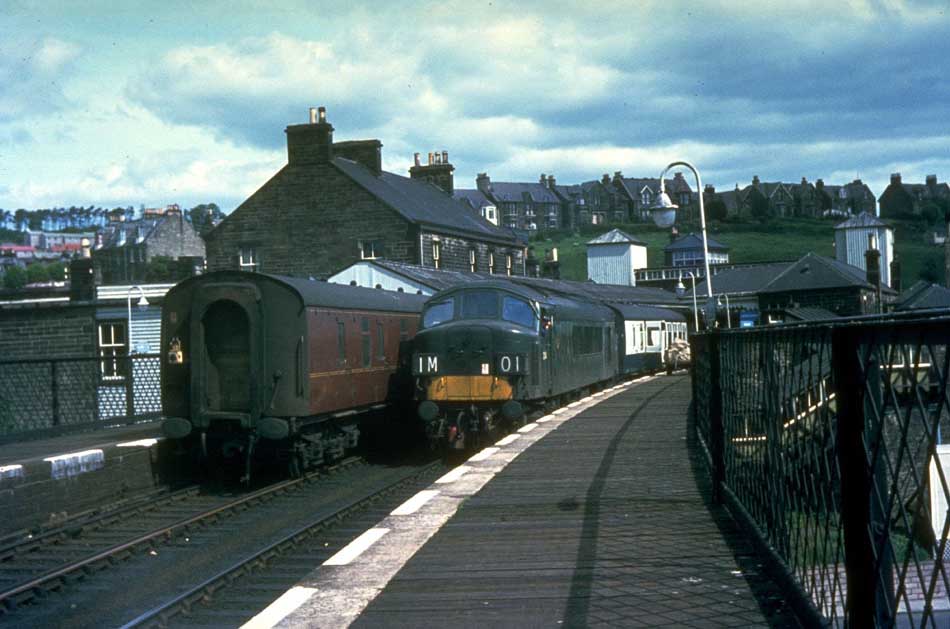
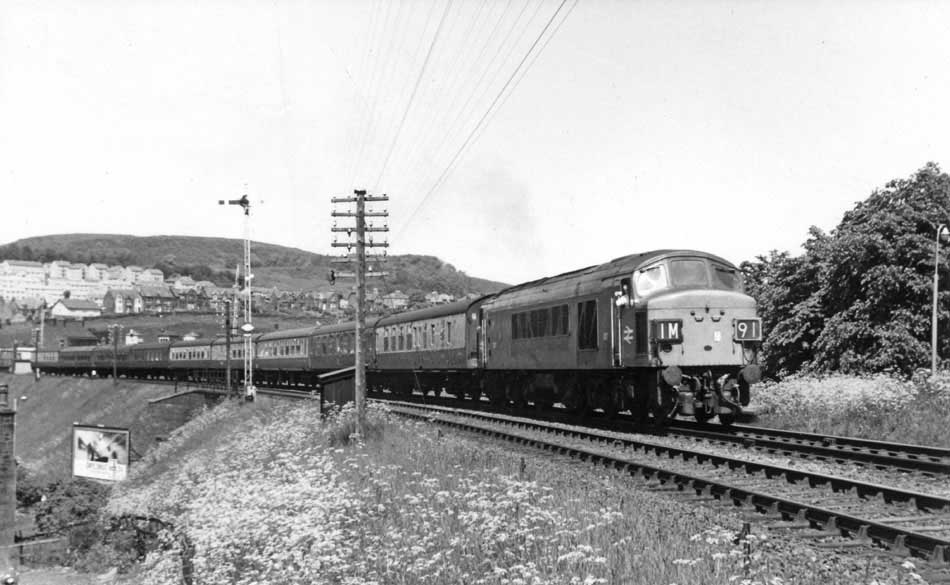
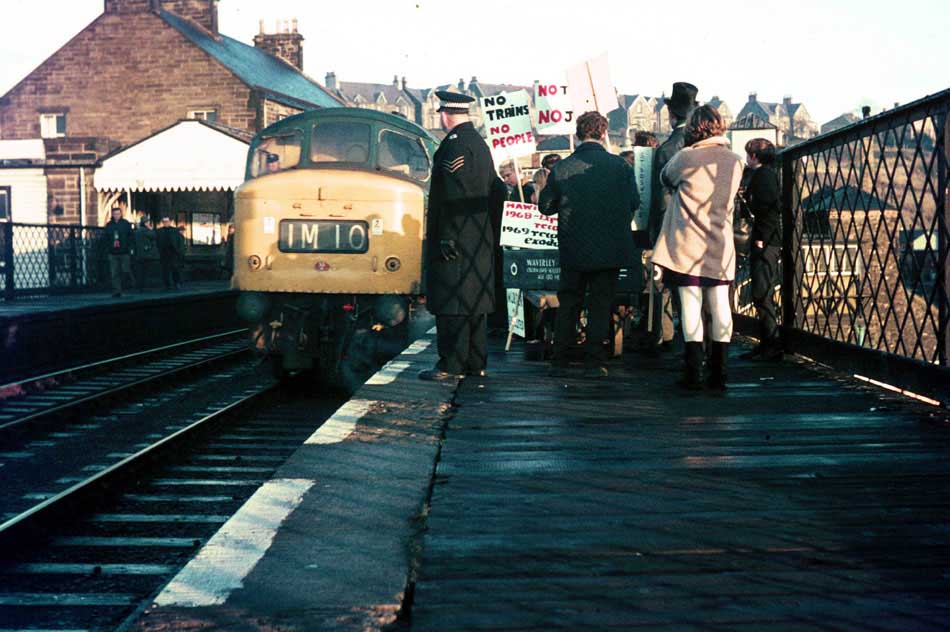
Thanks to Bruce McCartney for making the above views available - although only featuring Peaks here, other locomotive types that could also be found on passenger workings were the English Electric Type 4's and the Brush/Sulzer Type 4's.
On January 12/13th 1969 the junction between the Waverley route and the West Coast main line at Carlisle No.3 Junction was removed. This junction had been slated for renewal but this was held in abeyance pending the fate of the Waverley route. Work on removing the track commenced shortly after closure at Riddings Junction, about a mile a day was being removed, with the up line being removed first.
Page added November 19th 2004.
Last updated November 17th 2007.